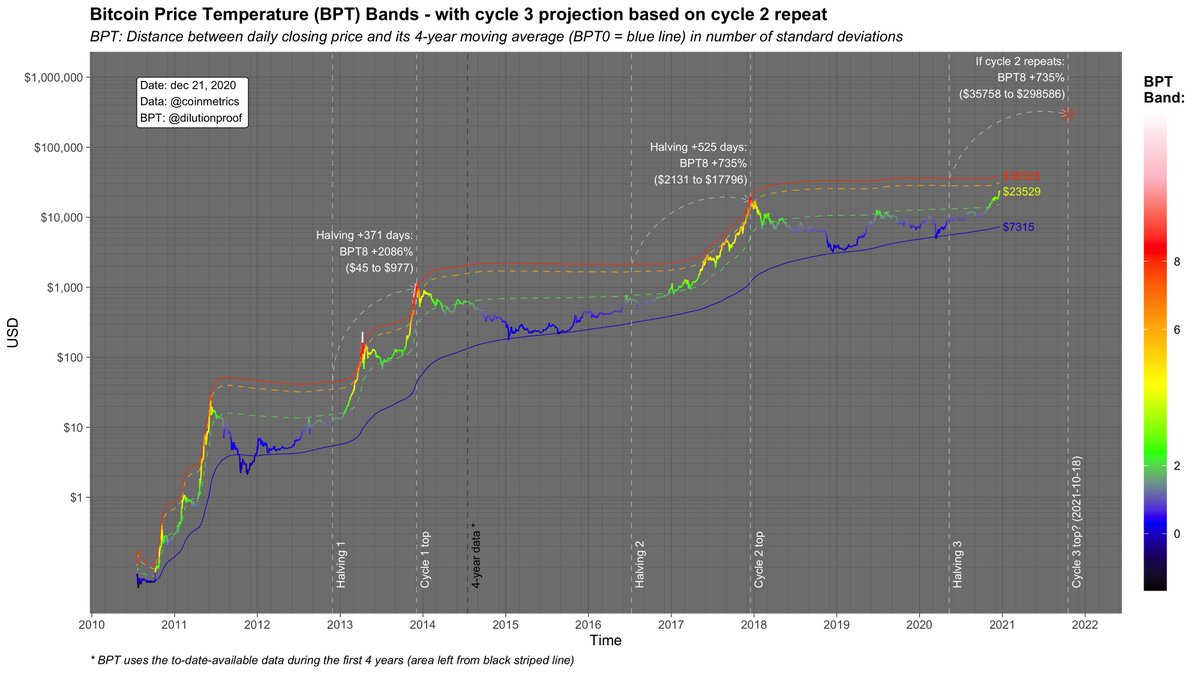
1/6 Since the #Bitcoin Price Temperature (BPT) & BPT Bands aren't available on a web-app (yet), I've gotten requests to periodically share updated charts.
As such, this is the first weekly BPT (Bands) update! 🌡️
All (5) charts & interpretations in this thread 👇



As such, this is the first weekly BPT (Bands) update! 🌡️
All (5) charts & interpretations in this thread 👇




2/6 Based on yesterday's daily closing price, the current #Bitcoin Price Temperature (BPT) is 4.58, which is comparable to the temperatures reached during 2013-Q1 & 2017-Q2 during the previous halving cycles.
Will the BPT run straight towards (at least) 6 again this cycle? 🤷♂️
Will the BPT run straight towards (at least) 6 again this cycle? 🤷♂️

3/6 The current (3rd) post-halving BPT trajectory is more similar to the 2nd (r=0.83) than to the 1st (r=-0.16) halving cycle.
However, current 🌡️'s are more heated than at the same point in cycle 2. Are we in for a correction, or up for a more steep incline like in cycle 1? 👀
However, current 🌡️'s are more heated than at the same point in cycle 2. Are we in for a correction, or up for a more steep incline like in cycle 1? 👀

4/6 Current #Bitcoin Price Temperature (BPT) Bands:
- BPT0: $7,428
- BPT2: $15,727
- BPT6: $32,325
- BPT8: $40,624
The BPT Bands are starting to slope up though; BPT8 increased by $228.94 (+0.57%) yesterday. These bands will slope up faster if volatility keeps increasing! 🔥

- BPT0: $7,428
- BPT2: $15,727
- BPT6: $32,325
- BPT8: $40,624
The BPT Bands are starting to slope up though; BPT8 increased by $228.94 (+0.57%) yesterday. These bands will slope up faster if volatility keeps increasing! 🔥


5/6 When we visualize the #Bitcoin Price Temperature (BPT) Bands based on the post-halving time, we see that #Bitcoin's overall price levels jumped up an order of magnitude during each halving cycle so far. Will history repeat itself once again? 👀 

6/6 More information on the used metrics can be found here:
https://twitter.com/dilutionproof/status/1338942312437706756?s=20
• • •
Missing some Tweet in this thread? You can try to
force a refresh









